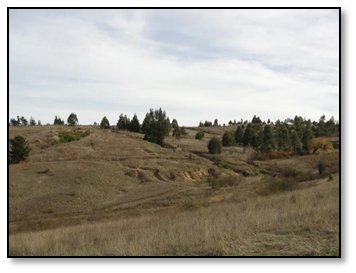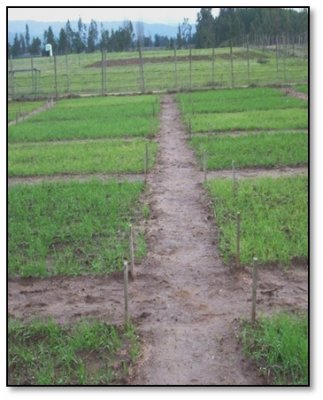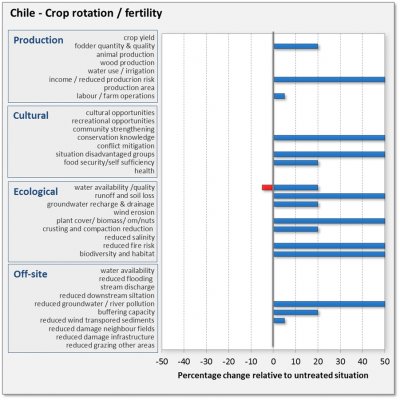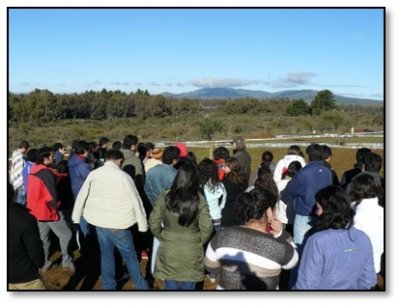|
Crop rotation: experimental results and conclusions |
 |
 |
In the dry Secano interior in Chile, farmers face problems of soil fertility depletion which affects the sustainability of traditional crop production. Another problem associated with fertility depletion is erosion because of periods in the crop rotation cycle where the soil is bare. Experiments were carried out to introduce crop rotation with legumes to replace wheat mono culture and to solve the problem of soil fertility depletion, while at the same time providing a better soil cover and also improving the soil structure, which improves infiltration.
|
Experiment: improving soil fertility with crop rotation
|
 |
Two experiments were carried out to see if monoculture wheat cultivation can be replaced by crop rotation with legumes.
Experiment 1. Four legumes species (peas, white lupine, yellow lupine and Vicia faba (a bean species) are tested in rotation with the traditional wheat crop. The experimental design is randomized block with four replications with plot size of 4x5 m.
Experiment 2. Two mixtures of annual legumes and different length of the period of pasture in rotation with wheat in a randomized block with four replications with plot size of 6x6 m.
|
- Assessments on Crop and Pastures: Natural abundance of 15N, 15N isotope dilution, photosynthetically active radiation (PAR) intercepted by the crop, dry matter production (above-ground and root) and grain yield biomass, in all treatments and in pasture, seed production, botanical composition, seed hardness, and seed bank and regeneration capacity for self-seeding.
- Soil Assessments: in situ N mineralization, leaching of nitrates and volatilization of ammonia.

The yield of the normal wheat with fertilizer is about 30% higher than any of the treatements. Of those the treatments woth Lupine perform the best. However, with crop rotation with legumes, the production cost of wheat is decreased by more than 70% since farmers do not need to buy fertilizers, saving of up to 100 kg N/ha is possible by using legumes in the crop rotation. Also, farmers get diversified source of income by selling legumes in addition to wheat. The biomass of wheat crop when it is rotated with legume is similar to its biomass when it is cultivated with fertilizer. But the crop yield is low (1.5 t.ha-¹) which is nearly half of the yield when it is cultivated with fertilizer.

 |
The results are evaluated from a production, socio-cultural and economic point of view. The bars express the estimated or measured percentage of change with respect to the reference situation. This change can be positive (blue) or negative (red). Note that this evaluation is based on the experiments, on the long term experience of the coordinating team in this area and on consultations with the farmers. |
- Stakeholders think that their quality of life will be improved because of diversified income source. The farmers have more products to sell in addition to wheat
- It also allows complementarity between crop production and livestock.
- The weakness of the technology is the difficulty in marketing the new products.
- There is also lack of appropriate machinery for harvesting the legumes.
|
 |
| This technology helps decrease production costs of wheat since fertilizer is not applied. |
| It helps carbon sequestration and thus minimises greenhouse effects. It also helps improve soil conditions by increased surface cover and soil organic matter. |
| The main bottleneck of the technology is the difficulty in marketing the new products. There is also lack of appropriate machinery for harvesting the legumes. |
|










